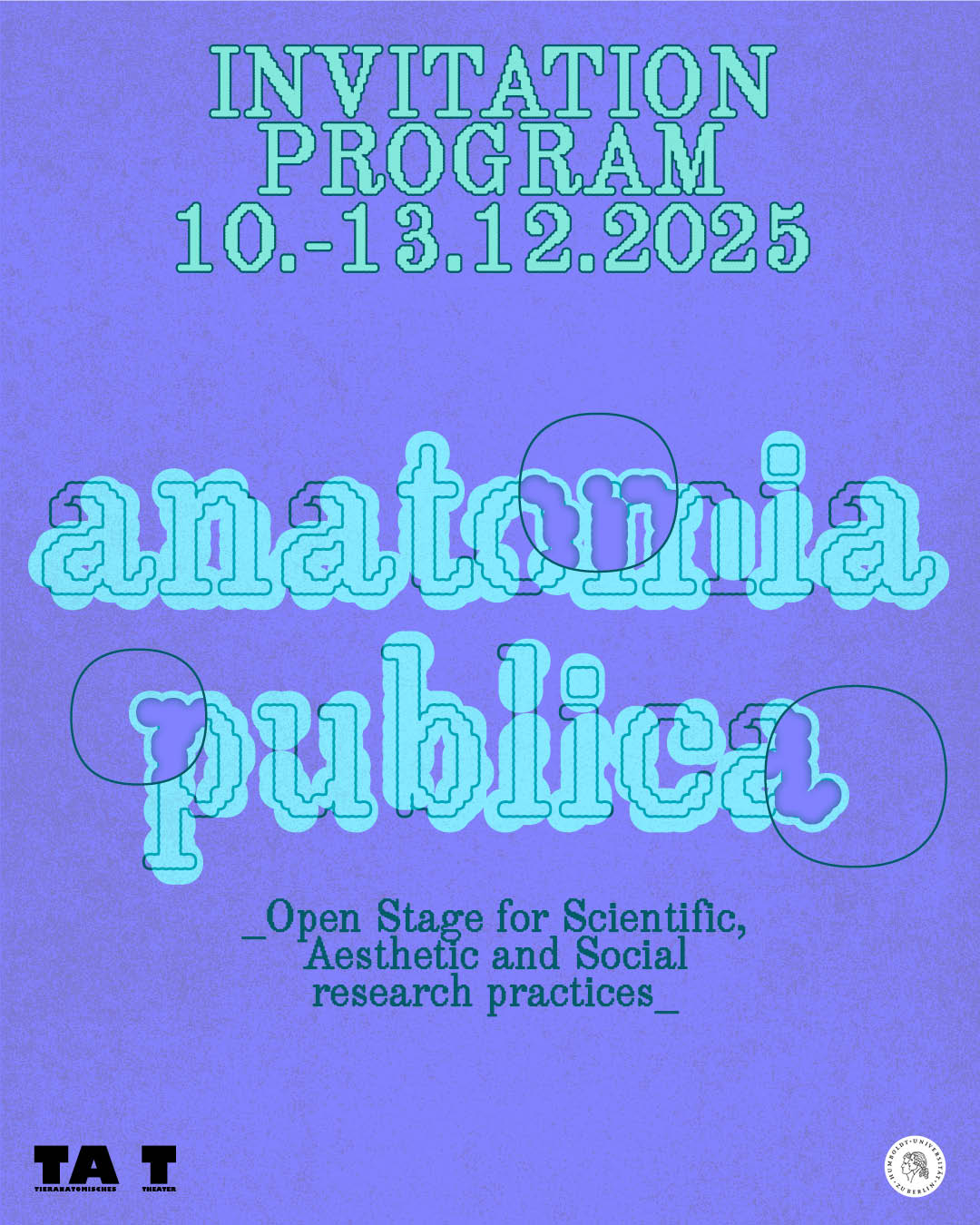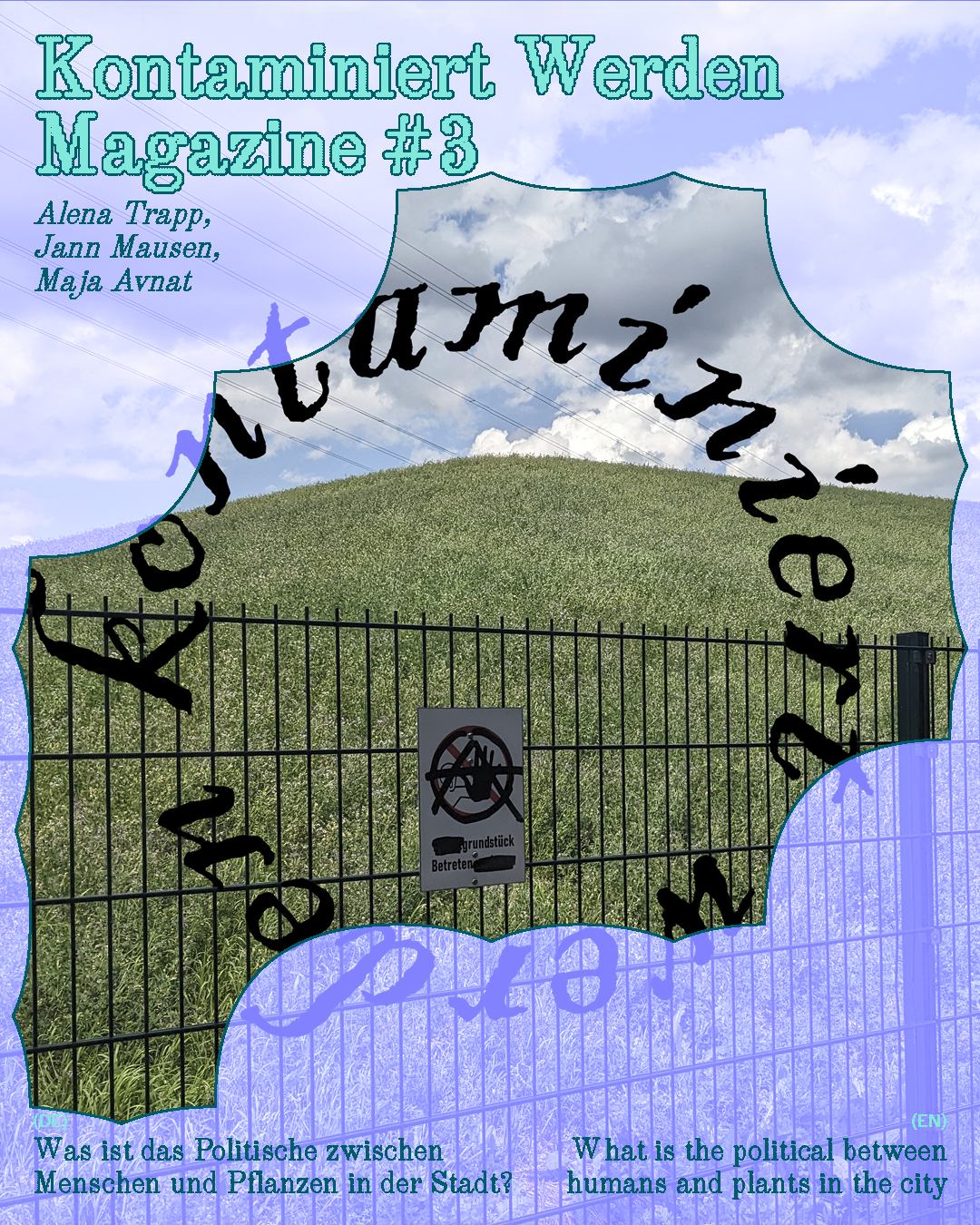Magazine #3: What Is the Political in the Relationships Between Humans and Plants?
The interdisciplinary group Kontaminiert Werden (Alena Trapp, Jann Mausen, Maja Avnat) explores urban ecologies and more-than-human social relations. The entanglements between humans and plants in the city are multidimensional — aesthetic (representational and/or embodied), technological (teleological), and shaped by knowledge traditions. Their analysis requires inter- and transdisciplinary approaches. We are working to establish a public forum in which situated research and debates are taken up and discussed with critical attention to power relations and historical contexts. With support from anatomia publica, we aim to continue the conceptual work for Kontaminiert Werden Magazine #3. Our deliberately open guiding question is: What is the political in the relationships between humans and plants?
Kontaminiert Werden will be in residence with us from November to December 2025.

Kontaminiert Werden at the Tieranatomisches Theater
Kontaminiert Werden will temporarily inhabit the Tieranatomisches Theater to publicly develop Magazine #3 and make collective research processes visible. At the center stands the Natur/Kultur Instrumentarium — a mobile research assemblage that investigates and makes tangible the entanglements between humans and plants in urban environments. In collaboration with the Späth-Arboretum (Dr. Anika Dreilich), ecological field methods such as the Bioblitz will be explored to connect artistic and scientific perspectives on urban ecologies.
The project functions as an open laboratory that brings together members of the Kontaminiert Werden network and expands through further contributions. Between November 26 and December 13, a range of formats — including screenings, workshops, readings, and performative insights — will invite the public to participate and exchange ideas. The knowledge exchange highlights are planned for December 10–12.
Paz Ponce – TA T Curator for Mediation & Outreach
E-mail: anatomiapublica.tat@hu-berlin.de / Phone: +49 (0)30 2093 46625
For further information about our residency program, please visit the homepage or TAT Aktuell.


For anatomia publica, the following members of the Kontaminiert Werden network are involved: Jann Mausen, Alena Trapp, and Maja Avnat.
Jann Mausen – Cultural studies scholar (HU Berlin); works on urban ecologies and nature/culture entanglements; curates programs and scholarly formats; co-editor of KW Zine #1 and KW Magazine #2.
Alena Trapp – Artistic-academic practice across performance, dance, sound, and critical somatics; teaches at HU on (critical) embodiment; develops participatory formats to explore more-than-human entanglements.
Maja Avnat – Junior Researcher (Excellence Cluster Matters of Activity, weißensee kunsthochschule berlin); research in Liquid Yarns and Active Trees on textile, thermally active prototypes; develops site-specific audio walks (e.g., Späth-Arboretum) and projects such as Planted Archives; with KW since 2023, contributor to Magazine #2.
Inspirations for KW’s engagement with human–plant entanglements in urban spaces include interdisciplinary projects such as the Feral Atlas (Anna Tsing et al., 2020) — a digital atlas of more-than-human field research in the Anthropocene — as well as the work of Matthew Gandy and Sandra Jasper (e.g., Natura Urbana; Botanical City), which highlight the significance of Berlin’s urban ecologies for (landscape) architecture, art, and urban history. For analyzing the political dimensions of human–plant relations, concepts such as Sandra Jasper’s “speculative ecologies” and Bettina Stoetzer’s “ruderal vegetation” are central, connecting gentrification and displacement, as well as artistic-activist counter-models, with ecological questions. Further inspiration comes from the Black Earth Collective (climate justice) and the Office for Radicalization Prevention in Nature Conservation (FARN).
Berlin offers numerous examples: botanical gardens play a decisive role in the selection and management of the city’s vegetation by participating in research on climate-resilient “trees of the future.” Looking at the historical background of botanical gardens as showcases of imperial power — and their influence on the import of houseplants into the city — also reveals colonial continuities that reach into Berlin’s living rooms.